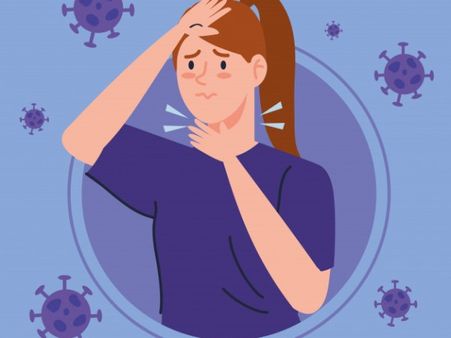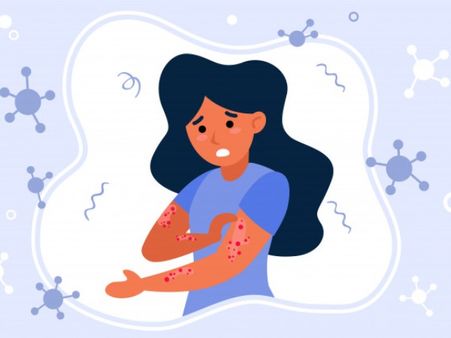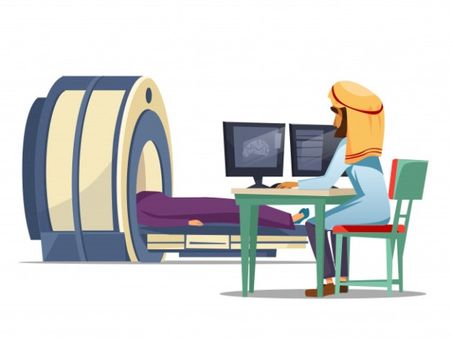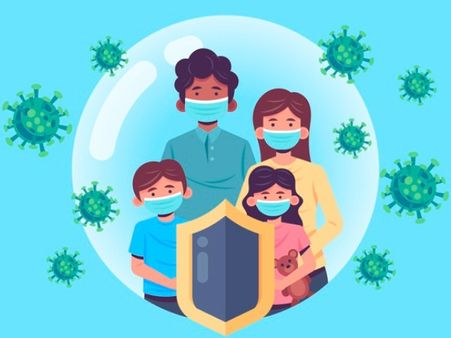Just In
- 29 min ago

- 1 hr ago

- 4 hrs ago

- 5 hrs ago

Don't Miss
- Movies
 MasterChef India Telugu New Episode: Chef Nikitha Umesh On MasterChef Telugu Top 10 Contestants
MasterChef India Telugu New Episode: Chef Nikitha Umesh On MasterChef Telugu Top 10 Contestants - News
 Mumbai Indians' Bus Gets Stuck In Jaipur Traffic; Fans Cheer For Rohit Sharma As Captain In Front Of Hardik
Mumbai Indians' Bus Gets Stuck In Jaipur Traffic; Fans Cheer For Rohit Sharma As Captain In Front Of Hardik - Sports
 IPL 2024: Impact Player Rule to be Abolished from Next Year? What is BCCI Saying?
IPL 2024: Impact Player Rule to be Abolished from Next Year? What is BCCI Saying? - Finance
 SEBI Investigates Adani Offshore Funds For Shareholding Disclosure Violations
SEBI Investigates Adani Offshore Funds For Shareholding Disclosure Violations - Technology
 Sony’s Critically Acclaimed Helldivers 2 Rumored to Release on Xbox, Claims Industry Insider
Sony’s Critically Acclaimed Helldivers 2 Rumored to Release on Xbox, Claims Industry Insider - Automobiles
 Log9 Unveils Amphion & Nexmile – Revolutionizing EV Asset Management
Log9 Unveils Amphion & Nexmile – Revolutionizing EV Asset Management - Education
 Students of the Canadian International School in Bangalore Raise Nearly 60 Lakh Rupees for Bangalore NGOs
Students of the Canadian International School in Bangalore Raise Nearly 60 Lakh Rupees for Bangalore NGOs - Travel
Kurnool's Hidden Gems: A Guide To Exploring India's Lesser-Known Treasures
COVID-19: Gangrene Could Be A Sign Of Severe COVID; What Is Gangrene? Its Risk Factors & Signs
A study carried out by doctors from Dr Ram Manohar Lohia (RML) Hospital in Delhi has said signs of gangrene on the skin could be a sign of COVID-19 [1]. The study mentioned the case of a 65-year-old COVID-19 patient who has no comorbidities and developed signs of gangrene before the typical respiratory symptoms associated with COVID-19.
Similarly, a paper published in May in the Journal of Cosmetic Dermatology mentioned that there are several reports of COVID affecting the skin, such as rashes. These symptoms are considered insignificant,' as those symptoms didn't seem to indicate any specificity to the respiratory illness [2].

But the suggestion that skin-related symptoms were insignificant is being overlooked now because, according to the recent case study, the development of gangrene due to clotting of blood in one limb served as an indicator of the respiratory disease's progression. Studies have pointed out that COVID-19 can cause blood clots in rare, severe cases [3].

Gangrene, A Sign Of COVID-19: The Case Study
The major findings from the study based on the 65-year-old patient are as follows:
- The patient had no prior comorbidities or a history of prothrombotic disease (a condition that causes blood clots) [4]
- The patient was admitted with complaints of weakness and pain in the right lower limb for ten days, followed by cough and fever (102°F) for five days
- The respiratory symptoms developed after the pain in the lower right limb, where the clotting occurred
- Dark diffuse discolouration of the right lower limb was noticed, after which the skin showed wet gangrenous changes of the right lower limb
- The patient also had oedema (swelling), and there was no pulse in the right lower limb's arteries [5]
- Antibiotics and steroids were started for the treatment of sepsis and COVID, along with aggressive management of thrombosis
- However, the patient died of pulmonary embolism five days after the admission [6]
- While thrombosis associated with COVID-19 has had skin manifestations before, this is the first time a large blood clot affecting almost the entire limb has been reported [7]
- Other COVID-19 skin manifestations, such as rashes, are secondary to the infection and not because of direct viral skin toxicity
- The development of thrombosis, which occurred before the respiratory symptoms showed, can offer clues into the severity of COVID-19 illness and, as such, can be seen as a warning sign of fatality

What Is Gangrene?
Gangrene happens when tissues in your body die after a loss of blood caused by illness, injury, or infection [8]. This often occurs because the tissue is not getting enough blood from your circulatory system. Gangrene can be external or internal.
Gangrene commonly affects the arms and legs, including the toes and fingers. Still, it can also occur in the muscles and organs inside the body, such as the gallbladder. The condition typically starts in a specific body part. It can spread through your body and cause you to go into shock if left untreated [9].
Gangrene is a medical emergency that could lead to amputations or death.

What Are The Types Of Gangrene?
Gangrene is primarily of three types [10]:
(1) Dry gangrene: Dry gangrene occurs when one of your body parts is not getting enough oxygen, causing the body to deteriorate and die slowly. In the case of dry gangrene, the skin is closed, and there is no evidence of infection.
(2) Gas gangrene: The bacteria causing gangrene can create an infection that causes gas bubbles and toxins to develop inside the affected area, resulting in tissue death. This type of gangrene can be fatal.
(3) Wet gangrene: Wet gangrene happens when your body tissues become infected with some bacteria, causing your tissues to become moist and resulting in the death of your tissues. It is severe than dry gangrene because of the possibility of infection spreading to other parts of the body.
- Fournier's gangrene: It is a rare condition and is caused by an infection in your genital area. It affects men more often than women and falls under the category of wet gangrene.
- Internal gangrene: This is a gangrene that affects your internal organs. It's usually related to an infected organ such as your appendix or colon.
- Meleney's gangrene: This type usually causes painful lesions on your skin 1 to 2 weeks after surgery or minor trauma.


What Are The Signs Of Gangrene?
The signs of external gangrene are as follows [11]:
- A reddish line develops around the affected tissue, which eventually turns black
- A wound that is red, sore, or swollen
- A wound that is filled with pus or gives off a bad smell
- Lacking the sense of touch in an isolated area (coldness)
- Blisters
- Swelling
- Thin, shiny skin, or skin without hair
- Pain
- An unexplained fever that lasts a long time
- Low blood pressure
- Confusion (in rare cases)
- Low blood pressure
- Fever, although some people may have a body temperature lower than the normal 98.6°F (37 C)
- Rapid heart rate
- Light-headedness
- Shortness of breath
- Confusion
- Diabetes
- Narrowed arteries (atherosclerosis)
- Peripheral artery disease
- Smoking
- Trauma or serious injury
- Serious frostbite
- Obesity
- Raynaud's phenomenon (a condition in which the skin blood vessels become narrowed)
- Weakened immune system
The signs of internal gangrene are as follows:
In this case, you may not have any symptoms on your skin or limbs. But can experience the following:

If the germs that caused the gangrene spread through your body, septic shock can occur. The signs and symptoms of septic shock include:
What Are Gangrene Risk Factors?
Any condition that affects the blood flow increases one's risk of getting gangrene, and they are as follows [12]:
Complications of COVID-19: Similar to this case study findings, studies from other countries have shown that there have been a few reports of people getting dry gangrene in their fingers and toes after having COVID-19-related blood clotting problems (coagulopathy). More research is needed to confirm this association [13].

What Are Gangrene Complications?
If not treated immediately, gangrene can lead to serious complications because the bacteria can spread quickly to other tissues and organs. Removal of infected tissue can lead to scarring or the need for reconstructive surgery. In severe cases, one needs to have a body part removed (amputated) to avoid fatality [14].
How Is Gangrene Diagnosed?
The doctor may suspect that you have gangrene based on your medical history and symptoms and may use a combination of additional diagnostic methods.
- Tissue and fluid sample analysis
- Blood tests
- X-rays, MRI scans, or CT scans
- Surgery (to get a better look at the tissue)

How Is Gangrene Treated?
The tissue that has been damaged by gangrene cannot be saved. However, steps can be taken to prevent gangrene from getting worse [15].
- Antibiotics
- Vascular surgery
- Hyperbaric oxygen therapy (done inside a chamber pressurised with pure oxygen)
- Tissue debridement (removes infected tissue and stop the infection from spreading)
- Amputation (in severe cases)
- Skin grafting (reconstructive surgery)
- Prevent infections by washing open wounds with mild soap and water and try to keep them clean and dry until they heal.
- Avoid tobacco use.
- Avoid getting overweight as excess weight can put you at risk of diabetes and place pressure on the arteries, limit the blood flow, and increase the risk of infection and slow wound healing.
- Care for your diabetes; watch out for any swelling, discharge, or redness that may indicate infection, a wound that does not seem to be healing or a change in the colour of your skin.
How To Prevent Gangrene?
While gangrene associated with COVID-19 may not be a preventable one, the common gangrene that develops on its own can be prevented through the following measures. Here are a few ways that can help reduce one's risk of developing gangrene:

On A Final Note…
The patient, 65 years old, who tested COVID-positive, was found to have gangrene signs and symptoms before the typical upper-respiratory symptoms of COVID-19 began developing.
-
 disorders cureIndia May See A Covid Surge In January, Next 40 Days Crucial; Here Is How To Protect Yourself From COVID-19
disorders cureIndia May See A Covid Surge In January, Next 40 Days Crucial; Here Is How To Protect Yourself From COVID-19 -
 disorders cureCOVID Can Trigger Parkinson's Disease: Study
disorders cureCOVID Can Trigger Parkinson's Disease: Study -
 disorders cureCommon COVID Symptoms In Fully Vaccinated Individuals: What You Should Know
disorders cureCommon COVID Symptoms In Fully Vaccinated Individuals: What You Should Know -
 wellnessMild COVID Linked To Life-Threatening Blood Clots, Increased Risk Of Cardiovascular Disease; Study
wellnessMild COVID Linked To Life-Threatening Blood Clots, Increased Risk Of Cardiovascular Disease; Study -
 wellnessCOVID-19 Variants In India: New COVID Variant May Pose Threat To Elderly People
wellnessCOVID-19 Variants In India: New COVID Variant May Pose Threat To Elderly People -
 basicsCovid-19 Linked To Early Onset Of Periods: What You Need To Know
basicsCovid-19 Linked To Early Onset Of Periods: What You Need To Know -
 wellnessCOVID XBB Variants Of Omicron In India: What You Should Know
wellnessCOVID XBB Variants Of Omicron In India: What You Should Know -
 disorders cureNew Omicron Subvariant BQ.1 Detected In Maharashtra: What You Should Know
disorders cureNew Omicron Subvariant BQ.1 Detected In Maharashtra: What You Should Know -
 disorders cureOmicron BF.7 In India, Risk Of Fresh Wave During Diwali: What You Should Know
disorders cureOmicron BF.7 In India, Risk Of Fresh Wave During Diwali: What You Should Know -
 womenPriyanka Chopra Speaks On Climate Change, COVID, Poverty At The UN Sustainable Development Goals 2022 Moment
womenPriyanka Chopra Speaks On Climate Change, COVID, Poverty At The UN Sustainable Development Goals 2022 Moment -
 wellnessCoronavirus Residues Might Be Causing Long COVID: New Study
wellnessCoronavirus Residues Might Be Causing Long COVID: New Study -
 art cultureRenowned Spanish Author Javier Marias Passes Away Due To Lung Infection Post COVID-19
art cultureRenowned Spanish Author Javier Marias Passes Away Due To Lung Infection Post COVID-19


 Click it and Unblock the Notifications
Click it and Unblock the Notifications




